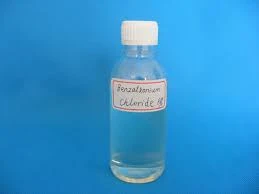phosphorothioate
Phosphorothioates A Remarkable Class of Nucleic Acid Modifications
Phosphorothioates are a unique class of modified nucleotides that have garnered substantial interest in the fields of molecular biology and genetics in recent years. Characterized by the replacement of one of the non-bridging oxygen atoms in the phosphate group of nucleic acids with a sulfur atom, phosphorothioates have demonstrated significant potential as tools for enhancing the stability and efficacy of antisense oligonucleotides, siRNA, and other nucleic acid-based therapeutics.
The modification of nucleic acids is crucial for developing effective molecular tools, as natural nucleotides are often prone to rapid degradation by nucleases in biological systems. Phosphorothioate modification effectively increases the resistance of nucleic acids to enzymatic degradation, which significantly prolongs their half-life in serum. This property is essential for improving the therapeutic potential of nucleic acid-based drugs, particularly in the treatment of genetic disorders, viral infections, and cancers.
One of the most notable applications of phosphorothioates is in the field of antisense therapy. Antisense oligonucleotides are short, single-stranded sequences designed to bind complementary RNA sequences, inhibiting the translation of target proteins. The incorporation of phosphorothioate linkages in these oligonucleotides increases their half-life and enhances their binding affinity to target RNA, enabling more effective therapeutic outcomes. Studies have demonstrated that phosphorothioate-modified antisense oligonucleotides can achieve significant reductions in the expression of target genes in vivo, leading to promising results in clinical trials.
phosphorothioate

In addition to their application in antisense oligonucleotides, phosphorothioates are increasingly being incorporated into RNA interference (RNAi) strategies. Small interfering RNAs (siRNAs) are a fundamental tool for inducing gene silencing through the RNAi pathway. The introduction of phosphorothioate modifications in siRNAs enhances their stability and cellular uptake, thereby improving gene knockdown efficiency. This modification can be particularly beneficial in therapeutic contexts where robust and sustained silencing of target genes is desired.
Moreover, phosphorothioates have played a pivotal role in the development of novel diagnostic tools. The enhanced stability and binding properties of phosphorothioate-modified probes allow for improved sensitivity in detecting specific RNA or DNA sequences, making them a valuable resource in the early diagnosis of diseases and monitoring of therapeutic efficacy.
While the advantages of phosphorothioate modifications are significant, there are also challenges and considerations associated with their use. One notable challenge is the potential for off-target effects, wherein the modified nucleic acids inadvertently interact with unintended targets. Careful design and thorough screening are essential to mitigate these risks. Additionally, the long-term effects of phosphorothioate modifications in vivo are not yet fully understood, necessitating ongoing research to ensure their safe application in clinical settings.
In conclusion, phosphorothioates represent a powerful and versatile modification in the realm of nucleic acids, facilitating advancements in therapeutic strategies, particularly in the fields of gene therapy, antisense technology, and RNA interference. Their ability to enhance stability and efficacy has opened doors for innovative treatments and diagnostics, revolutionizing approaches to managing various diseases. As research progresses, the continued exploration of phosphorothioate-modified nucleic acids will likely yield even greater insights and applications, cementing their role as invaluable tools in molecular medicine and biotechnology. The future holds great promise for this remarkable class of molecular modifications, paving the way for improved patient outcomes and novel therapeutic modalities.
-
Pbtc Scale InhibitorPBTC: A Scale Protector for Industrial Water TreatmentNewsAug.05,2025
-
Organic Phosphonate: An Efficient Defender in the Field of Scale InhibitionNewsAug.05,2025
-
Hydrolyzed Polymaleic Anhydride: Green Pioneer in Scale Inhibition FieldNewsAug.05,2025
-
PAPEMP Polyamino Polyether Methylene Phosphonic Acid For SaleNewsAug.05,2025
-
Flocculant Water Treatment: A Pioneer in Purification in the Field of Water TreatmentNewsAug.05,2025
-
Benzyl Isothiazolinone: An Efficient and Broad-Spectrum Antibacterial Protective GuardNewsAug.05,2025





